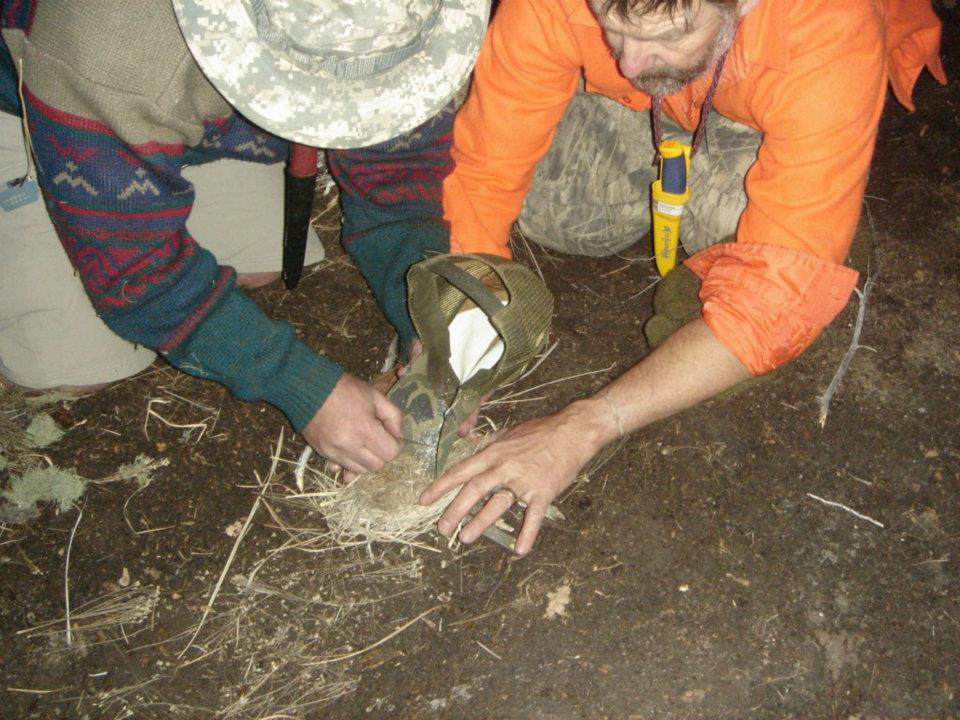MasterWoodsman.com® is a resource of information with a focus on skills, not gear. In keeping with that premise, I want to share with you not just what I carry in my survival kit, but more importantly, the rationale behind what I carry and how I would use it.
Therefore, let me also present to you an outline of cold weather considerations before you watch the survival kit video. Our ancestors had common sense when taking care of themselves in the outdoors. Folks living in today’s “thermostat society” sometime underestimate how quickly Mother Nature or the status quo can change and how long it takes to adapt.
The outline comes directly from pages 75 and 210 of 98.6 Degrees: The Art of Keeping Your Ass Alive! When you interpret the context of these pages, you will appreciate the book’s genius approach. Hopefully it will better explain MY kit too.
COLD-WEATHER BOTTOM LINE
1. Produce Heat – Exercise using the body’s larger muscle groups (squats); eat calorie-dense foods, especially carbohydrates, frequently throughout the day; create fire in conjunction with space blankets or other reflectors if possible; locate south-facing microclimates for maximal sun exposure; hydrate using warm/hot fluids with dissolved hard candy or other sugars when available.
2. Decrease Heat Loss – Wear proper clothing especially in the head, neck, and torso areas; replace wet clothing with dry; create or find shelter from the elements; decrease surface area while increasing volume; avoid or insulate the body from cold surfaces.
3. Avoid becoming exhausted (60 percent rule). Working at 60 percent allows the body to burn fat reserves instead of using up glucose and oxygen stores. Get adequate sleep and rest.
4. Reduce internal and external constriction – Avoid ingesting vasoconstricting substances; tight clothing, equipment, and footwear.
5. Stay Hydrated – Drink warm to hot liquids if possible; urine should appear “clear.”
6. Stay aware of what’s happening. Be conservative. Don’t take unnecessary chances. Cultivate and maintain a “Party On” attitude.
If it’s COLD outside– Reduce heat loss: get out of the wind, off the ground, and remove wet clothing.
– Put on dry, insulated clothing and seek or make shelter. Pay special attention to protecting your head, neck, and torso.
– Build a fire if necessary. Gather extra wood for the night.
– Drink your water (hot if possible with a few dissolved hard candies or sugar). Clear urine means your body has enough water.
– Eat high-energy foods (carbs) throughout the day.
– Get familiar with your area and “make camp” early before it gets dark.
– Rest and conserve your energy unless you are performing vital tasks or exercising to keep warm.
– Maintain a calm, positive attitude.
– Be prepared to signal rescuers at all times.
As you watch this video, please note I have a day job and do not make my livelihood as a survival instructor. Also, there is no One-Size-Fits-All kit. I am simply sharing MY kit which works for me and where I play. Environment, Season, Skill Level, Fitness Level, etc. will dictate what YOU carry.
http://youtu.be/ZxbdEIIVZOI
LIST OF MY KIT CONTENTS
Items that Reduce Heat Loss
- 55 Gallon Drum Liners (2) – used as Poncho, Jacket, Mattress, Duvet, Shelter, Tube Tent
- Space Blanket – vapor barrier / heat reflector
- Cordage / Knife / Duct tape – shelter construction
- Bandana – as scarf and/or head cover
Items that Produce Heat (in addition to exercise)
- Matches
- Metal Match
- Magnesium bar with striking insert
- Fresnel Lens
- Tinder Straws
- Knife / Cordage – friction fire
- Food
Hydration
- Metal Container for boiling
- Chlorine dioxide (Micropur Tabs) for treatment
- Clear bag – transpiration
- Trash bags / Blanket – rain / dew collection, water collection
- Trash bag – rock boil
- Bandana / Kit for improvised dew sponge
- Knife – water from plants
Signaling
- Signal Mirror(s)
- Whistle
- Mylar blanket
- Flashlight
- Metal Match
First Aid
- Small Kit with band-aids, antibiotic ointment, medicinals
- Duct tape
- Bandana
- Cordage
- Plastic bag – wound irrigation
- Krazy Glue
- Metal container for medicinal teas
Miscellaneous
- Compass
- Sewing / Fishing Kit
- Extra Cordage
- Duct tape
SUGGESTED ARTICLES / VIDEOS:
Your Guide To Survival Using a Trash Bag < must read
The Tinder Bundle
That Fresnel Lens in Your Survival Kit
Your Campfire and the Weather
Collecting and Treating Water in the Backcountry
Basic Safe Travel and Boreal Survival Handbook
Five Heat Loss Mechanisms by Survival.com:

Training applied in the field. Magnesium scraped into the bill of a hat then carefully put into a tinder bundle for fire as the sun is setting. All we had was our knives and the one mag bar with striking insert to create a heat source suitable for a Northern Arizona Winter night that went down to the mid-teens.


5 Responses to My Survival Kit